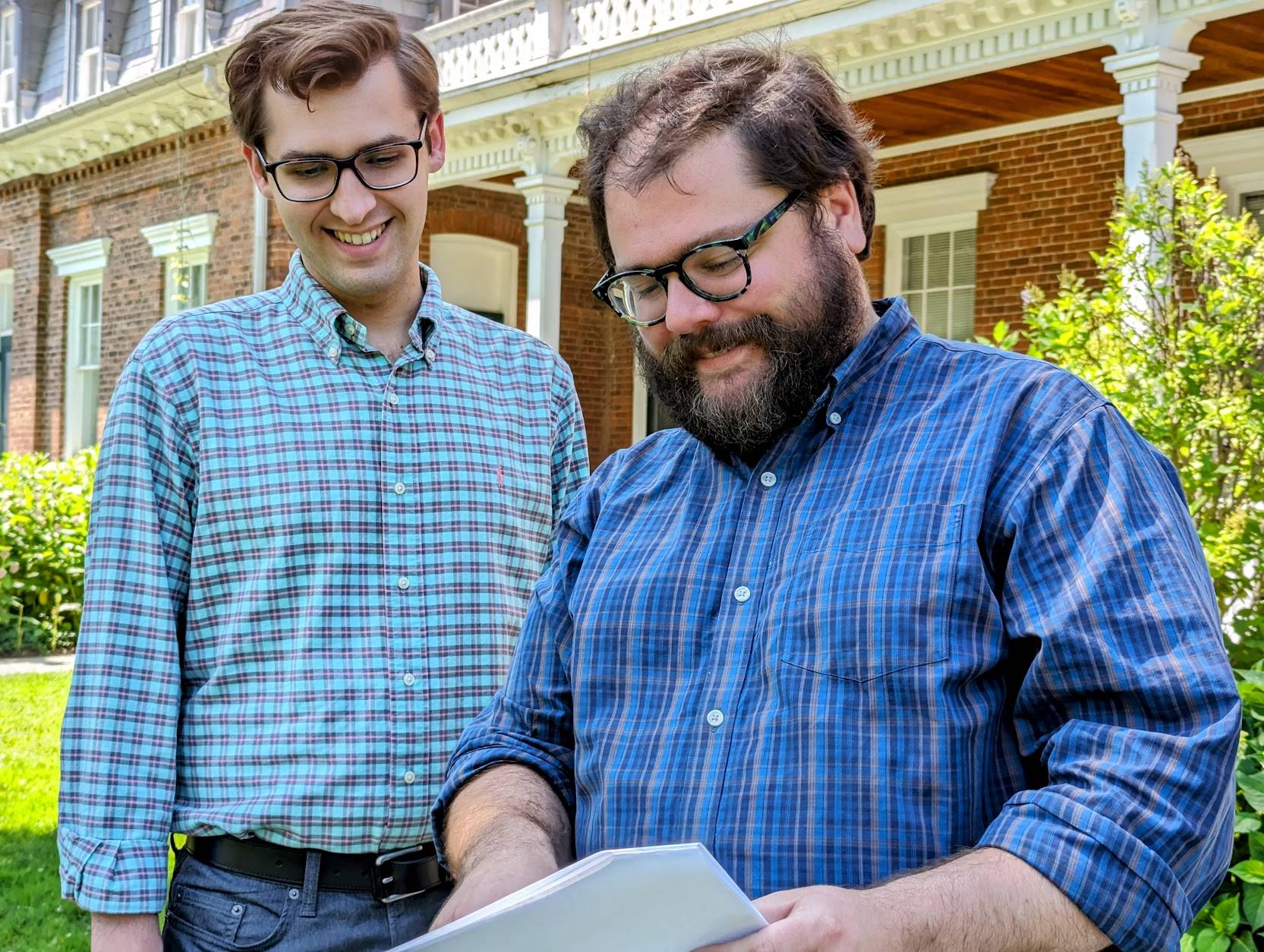Eli Watson ’24 is one of 31 student fellows who completed research with a community-based organization in upstate New York this summer as a part of the Upstate Institute Summer Field School. He describes the project below in his own words:
In 1848, a group of Perfectionists established the Oneida Community in Oneida, N.Y., believing this act to be a first step in bringing heaven and Earth closer together. Perfectionists were Christians who believed a life without sin could be attained on Earth. The Oneida Community believed the greatest sin was selfishness and that the best model for living was a communal one where everything was shared in common. Following its spiritual mission, the Oneida Community would become one of the most successful utopian communities in American history before its dissolution in 1880.
The Community’s massive home called the Mansion House, constructed in multiple stages beginning in 1862, still stands. In 1965, the Mansion House was designated a National Historic Landmark, and today it is stewarded by a nonprofit organization that aims to preserve the building and its history, as well as connect with surrounding communities through public history education and other diverse programming. Presently, the Oneida Community Mansion House is home to a museum, an active inn, and lived-in apartments. Part of why the Mansion House is so unique is that it has always been a home. After the breakup of the community, community members and their descendants continued to live in and around the Mansion House, and they still do to this day.
The Mansion House museum tells the living history of this remarkable place and community, and I’m grateful for the opportunity to work with the Mansion House this summer as an Upstate Institute Fellow. Collaborating most closely with Tom Guiler, director of museum affairs and Theresa Batty for graphic design, I have been researching and designing a museum exhibit about four lesser-known Oneida Community members. We are investigating how their stories contribute to a more multidimensional and personal understanding of the Oneida Community and its history. We are highlighting these stories on four individual panels to be located separately within the museum spaces of the Mansion House. Each individual will thus receive distinct attention and relate to the appropriate surrounding museum space.
Bringing these stories to life has been a process of hard work across 10 weeks that will continue after my fellowship concludes. To start, I studied existing secondary materials written about the Oneida Community to find a large number of potential candidates for the exhibit to spotlight. Next, we dug into primary sources coming firsthand from the community and its immediate descendants, narrowing down our selection to four individuals after much research and collaborative decision-making. We are very excited to share the stories of these remarkable people at the Mansion House, and the exhibit design process is currently underway. We’re especially looking forward to the interactive element of this exhibit, which will take the form of a scavenger hunt, asking visitors to seek out the individual panels throughout the Mansion House while critically engaging with their stories and the rest of the museum. The exhibit is scheduled to be installed in the fall of 2023.
In just 10 weeks, I’ve learned a great deal about how a smaller history museum with strong community connections operates. I’ve had incredibly valuable experiences doing archival research, cataloging archival materials in the museum’s database, and collaborating on exhibit design. I’ve also learned more about the inner workings of museums and nonprofit organizations and about local New York histories. Most importantly, I’ve been able to connect with the local community.
Being at the Oneida Community Mansion House this summer has been a privilege, and I’ve immensely enjoyed my time there. Everyone at the Mansion House has been hugely supportive and welcoming, and this project would not be possible without the collaborative effort of the many people involved. At Colgate, I’m a history major with a passion for education, an interest I hope to continue in my studies and career. Working with the Mansion House has been a wonderful experience in public history education and research, and I will certainly take all that I’ve learned into my future academics and professional life.
